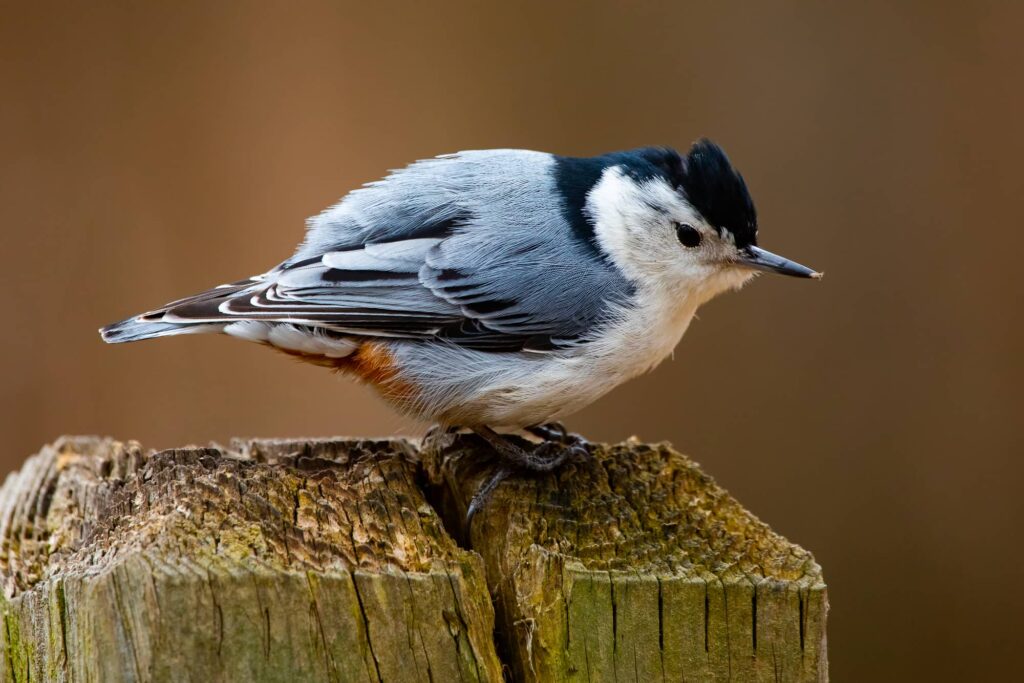If you’re a fan of birding, Rhode Island is definitely a destination to look forward to. Being home to the Coastal Lowlands, 393,000 acres of forests, and seven state beaches, the Ocean State has become a sought-after destination for many birding enthusiasts.
The birding scene in Rhode Island is something to speak of. With its eccentric collection of green areas, the state hosts around 431 species of birds, including some rare breeds and some seasonal visitors.
Out of the 431, we have 26 species on our list that are worth checking out. Most of them are backyard birds, which means you can attract them to your bird feeder with some seeds.
Whether you want to see bluebirds flaunting their color against the sky, green birds camouflaging against plants, or red birds standing out like they’re meant to be, we have all the colors you’d love to see here on this list!
Red Birds in Rhode Island
House Finch

- Scientific Name: Haemorhous mexicanus
- Length: 5–6 inches
- Weight: 0.6–0.9 ounces
- Wingspan: 8–10 inches
Only male House finches are red. The females are brownish-gray with brown streaks and no hint of pure red on their bodies. The color pigment on their bodies differs according to their diet. Most males have red on their upper chests and faces, but it may vary.
You can easily identify House finches due to their large beaks, which look a bit awkward on their small bodies. Additionally, the birds have long tails and flat heads.
These birds prefer to stay in flocks, and they frequently visit backyards as groups. You may attract them by laying out some black oil sunflower seeds.
Red-Winged Blackbird

- Scientific Name: Agelaius phoeniceus
- Length: 9–10 inches
- Weight: 2.5–3 ounces
- Wingspan: 12–16 inches
Red-winged blackbirds aren’t all-red. In fact, they have entirely black bodies, with the only red on their bodies being the cap on their shoulders. However, because it’s their most unique feature, it’s their main identification point.
These birds like to make their presence known. If they notice that you’re looking at them, they may put on a show for you and perform one of their famous dance flights. They also sing loudly to get noticed.
You can find red-winged blackbirds on high trees, particularly around areas with standing water.
Northern Cardinal

- Scientific Name: Cardinalis cardinalis
- Length: 8.3–9.1 inches
- Weight: 1.5–1.7 ounces
- Wingspan: 9.8–12.2 inches
Northern cardinals may be the most common bird in the United States. You can find large populations of this common backyard bird in all states.
Identifying this familiar bird is a piece of cake if you already know how they look. Their bodies are vibrant red and shaped like a small ball of feathers.
These beautiful birds mostly move around in pairs. You can find them near trees and low shrubs, and they may visit your backyard bird feeding station every once in a while.
Pileated Woodpecker

- Scientific Name: Dryocopus pileatus
- Length: 16–19 inches
- Weight: 8.8–14.1 ounces
- Wingspan: 26–30 inches
Like Red-winged blackbirds, Pileated woodpeckers only have red on one part of their bodies: the crown at the top of their heads. Other than that, the rest of their bodies are covered in black feathers, with white stripes going down their faces.
These birds are among the most distinctive woodpecker species because of their body shape: they have tall bodies with pointed bills. Woody Woodpecker is the most famous Pileated woodpecker in history.
You can find these birds around Ozarks and mature forests. They prefer staying near dead trees, where they can peck at the wood all they want.
Red-Bellied Woodpecker
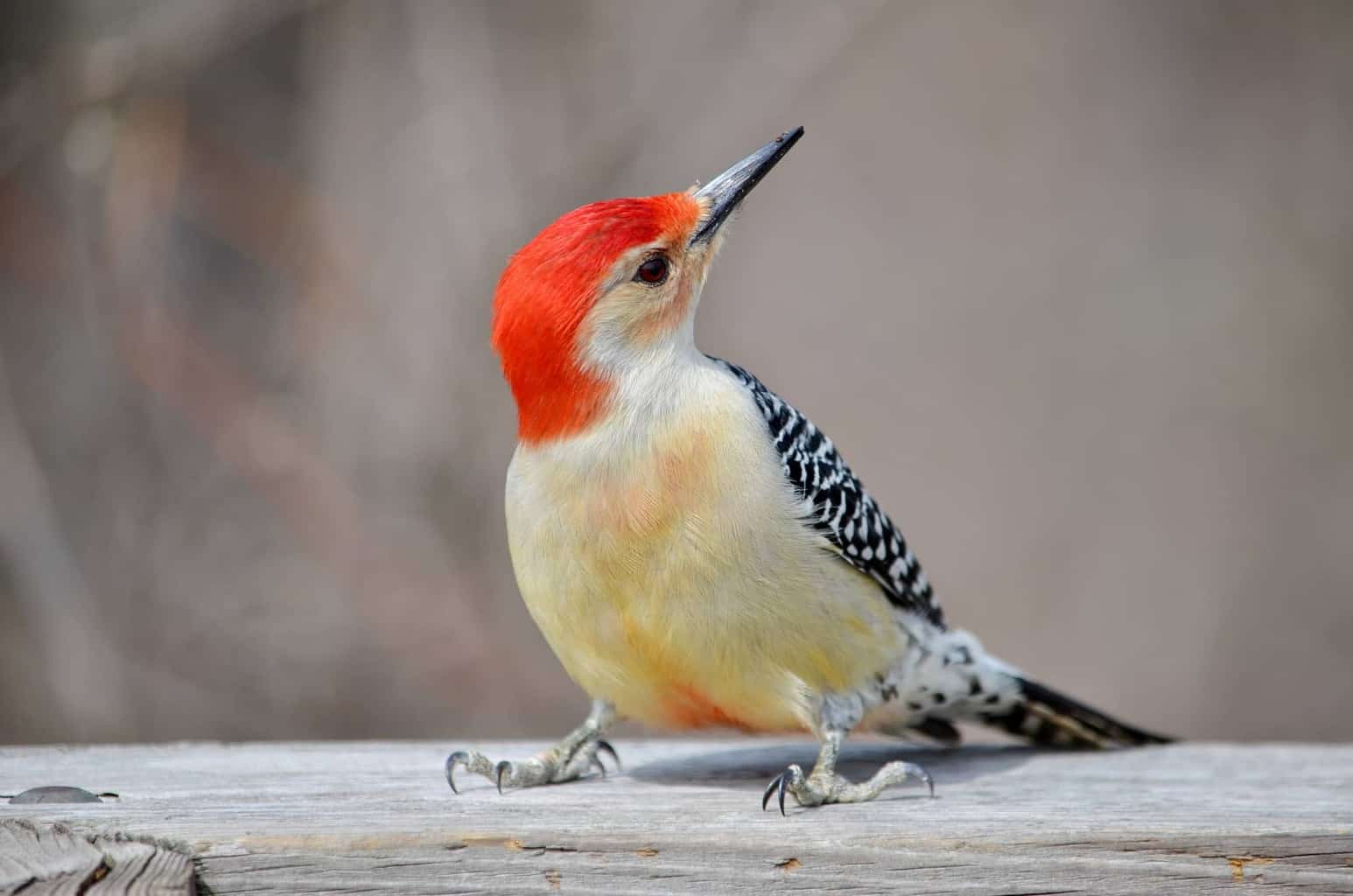
- Scientific Name: Melanerpes carolinus
- Length: 9.4 inches
- Weight: 2–3.2 ounces
- Wingspan: 13–16.5 inches
Red-bellied woodpeckers are unique among other birds of the same kind. Their bodies are black and white with a jagged pattern. Meanwhile, the top and back of their heads are red.
Their bellies blush in a deep red color when they’re afraid; hence, the name.
Contrary to most woodpeckers, red-bellies don’t have crests. They are found in Rhode Island in abundant numbers—more than other woodpecker species in the state.
If you want to attract them to your backyard feeder, you may lay out some peanuts and dried seeds.
Blue Birds in Rhode Island
White-Breasted Nuthatch
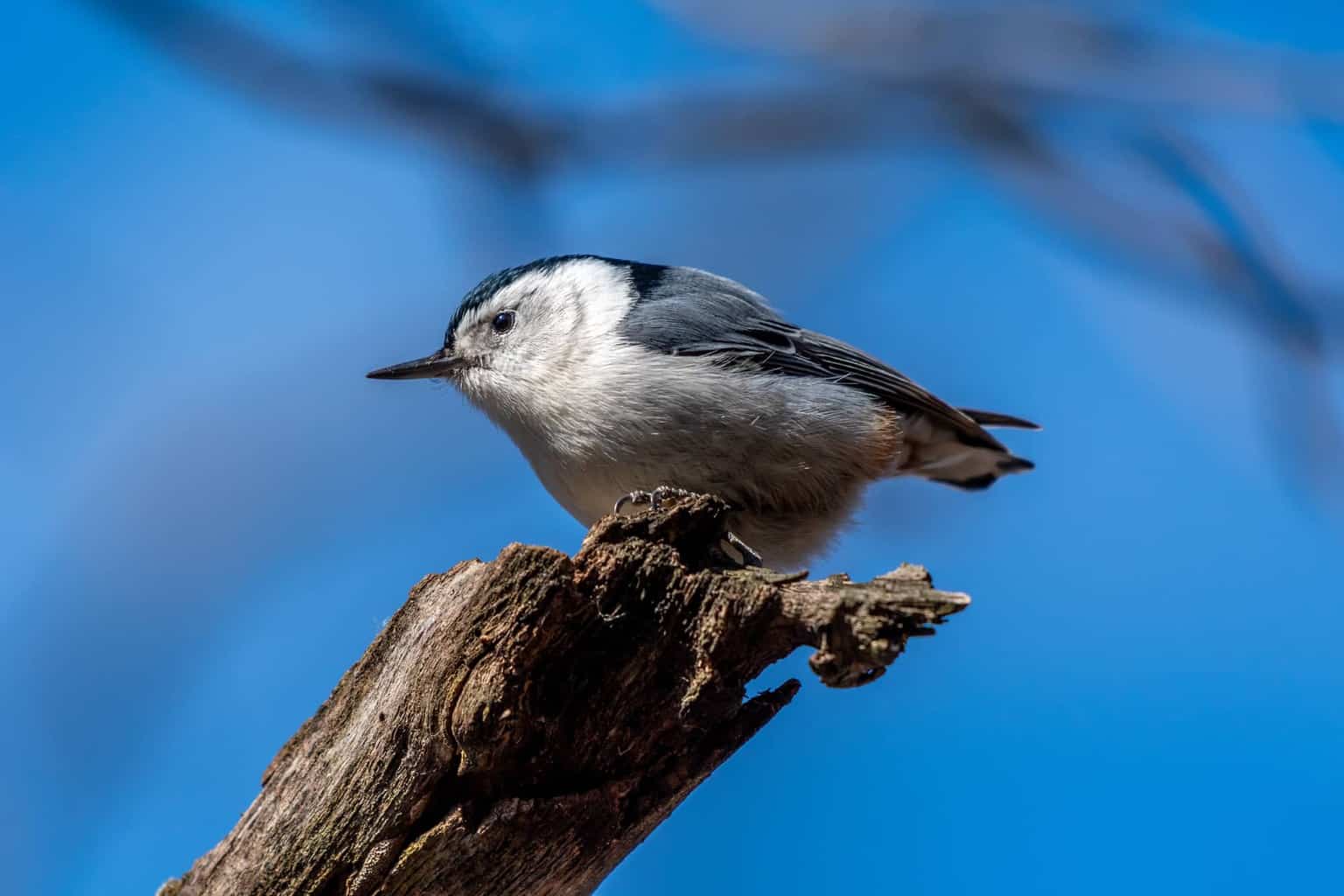
- Scientific Name: Sitta carolinensis
- Length: 5–5.5 inches
- Weight: 0.6–1.1 ounces
- Wingspan: 8–10.6 inches
Four species of Nuthatches live and breed in North America. The White-breasted nuthatch is the most common one in Rhode Island, along with its red cousin, the Red-breasted nuthatch.
You can find this pale bluebird mainly in deciduous forests. And it frequently visits backyard feeders, so you can probably attract it by putting down some suet and dry seeds.
Blue Jay

- Scientific Name: Cyanocitta cristata
- Length: 9–12 inches
- Weight: 2.5–3.5 ounces
- Wingspan: 13–17 inches
The Blue jay is the most common bluebird in all of the states. In Rhode Island, it’s found in abundant numbers in Providence, and you can see scattered birds across the rest of the state, as well.
You can quickly identify Blue jays because they have beautiful plumage of icy blue that will catch your eye a mile away. They spend most of their time near oak trees, and they’re frequent visitors to backyard feeders.
Although Blue jays are small and delicate, their call sounds like that of a hawk. They use it to warn their family of impending danger, so don’t be alarmed.
Common Grackle
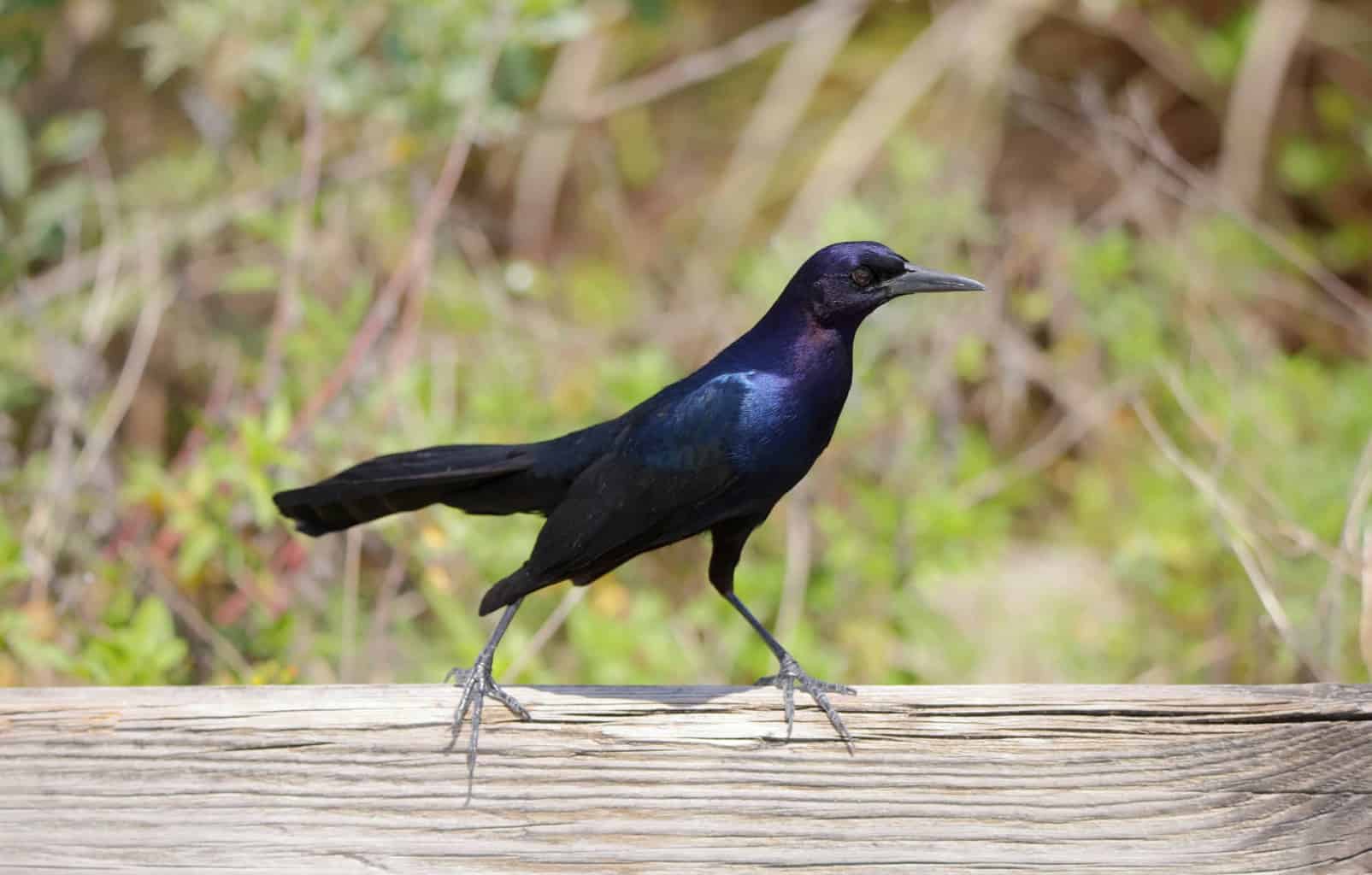
- Scientific Name: Quiscalus quiscula
- Length: 11–13 inches
- Weight: 2.6–5 ounces
- Wingspan: 14–18 inches
Common grackles have beautiful bodies, mainly consisting of iridescent feathers that shine brightly under direct sunlight. They have a blue head, which is why they’re classified among bluebirds.
However, you may not notice the color from far away—it may be muted if the bird is away from light.
In Rhode Island, you’ll mostly find Common grackles near farm fields. They like to feed on rice and corn, so you may find them near fields with grainy crops.
Eastern Bluebird

- Scientific Name: Sialia sialis
- Length: 7–8 inches
- Weight: 1–2 ounces
- Wingspan: 11.5–13 inches
Eastern bluebirds have a unique coloration. Their backs and heads are blue, and their fronts are peachy. Meanwhile, their lower bodies are white. Despite the distinctive coloration, people often mistake them for Indigo buntings and Blue grosbeaks because they’re all almost the same size.
You can find Eastern bluebirds in open fields and near golf courses. They also like parks and broad green areas.
These birds were once rare in Rhode Island, but they’re now the most common bluebird in the Ocean State.
Blue-Gray Gnatcatcher
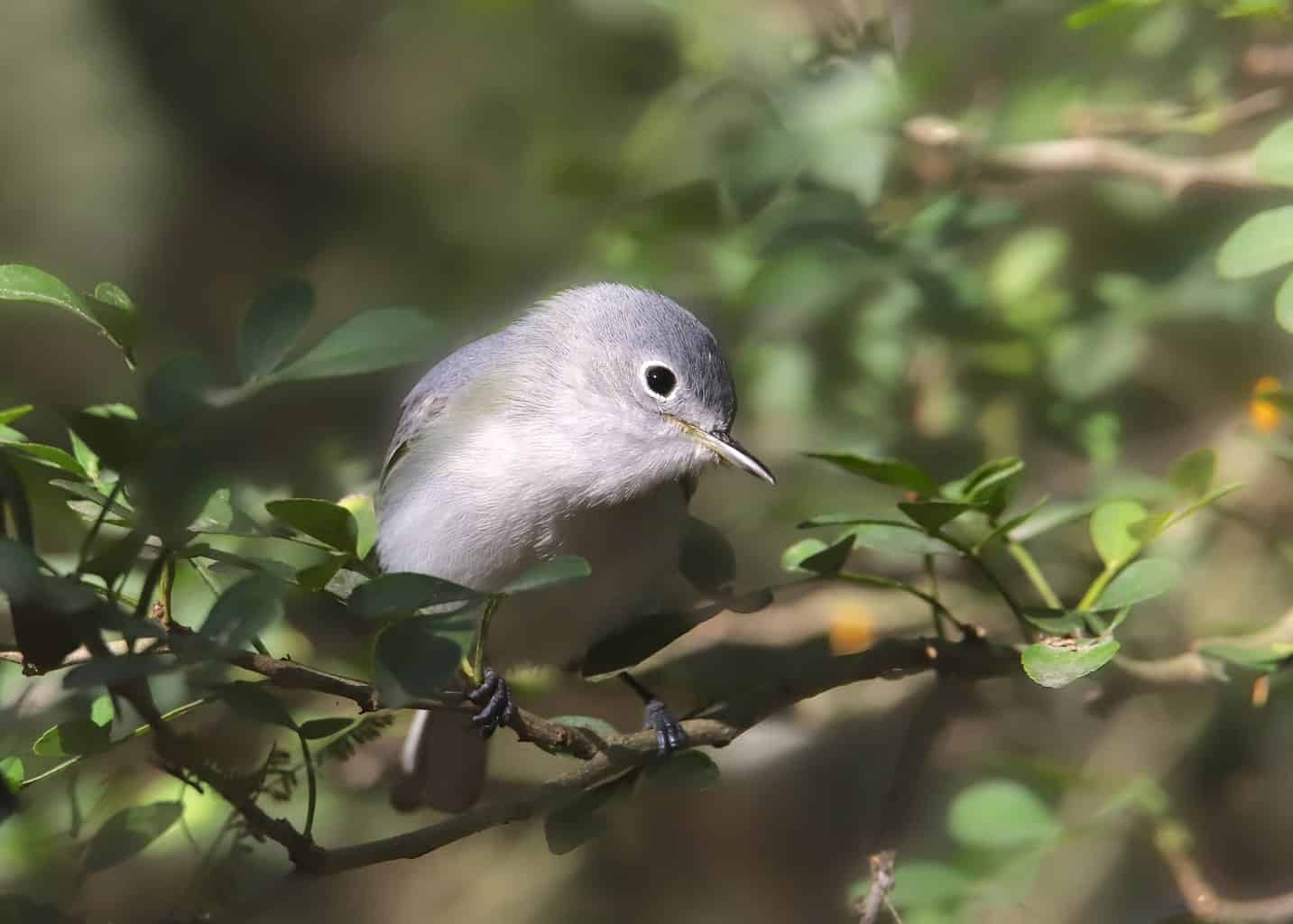
- Scientific Name: Polioptila caerulea
- Length: 4–4.3 inches
- Weight: 0.2–0.3 ounces
- Wingspan: 6.3 inches
Blue-gray gnatcatchers have blue bodies with a pale gray hue. You may think they’re entirely gray at first glance, but once you look closer, the blue will become more apparent. You can watch for them in sunny conditions if you want to explore their coloration closely.
These birds feed on seeds and insects they find on the ground. You’ll frequently see them foraging on the ground, looking for worms and insects for lunch.
It’s worth noting, though, that these birds are smaller than your average bird. So it’ll be a tad challenging to find them.
Green Birds in Rhode Island
Ruby-Throated Hummingbird
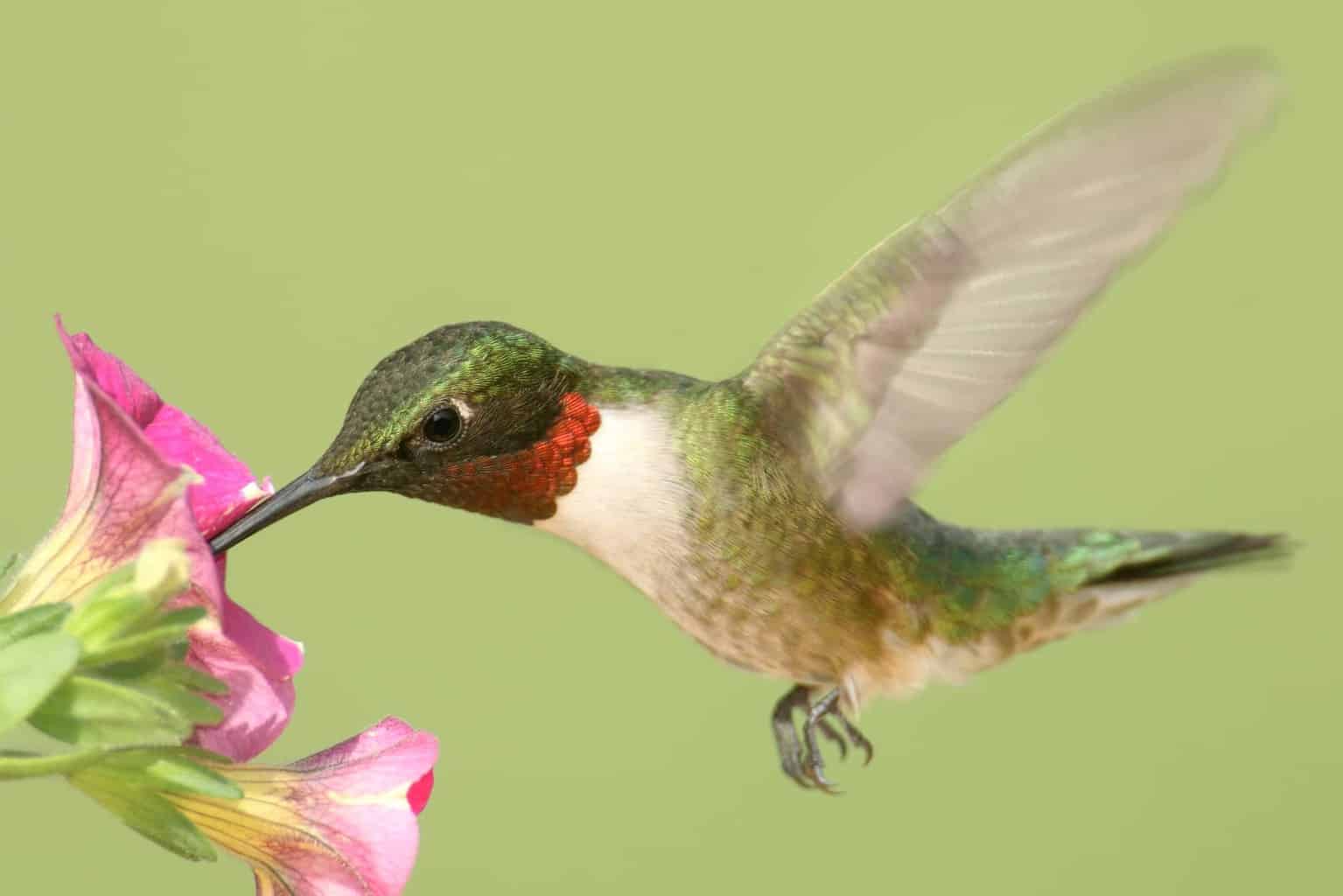
- Scientific Name: Archilochus colubris
- Length: 3–4 inches
- Weight: 0.1–0.5 ounces
- Wingspan: 4–4.5 inches
There are only two hummingbird species that originate in Rhode Island, and the Ruby-throated hummingbird is one of them. This small-sized bird usually arrives in the state around the beginning of May, and it leaves near the end of September.
The adult Ruby-throated hummingbird has a long pointed bill that looks like a knife. However, their main identifying feature is the iridescent Fuschia color on their throats. Their wings are also iridescent, but they have a bright green color that complements the hot pink on their throats like a well-drawn picture.
These birds are avid fliers. When they’re in flight, their rapid wing beats allow them to hover in place. Not only that, but the small birds can also fly backward.
Mallard Ducks
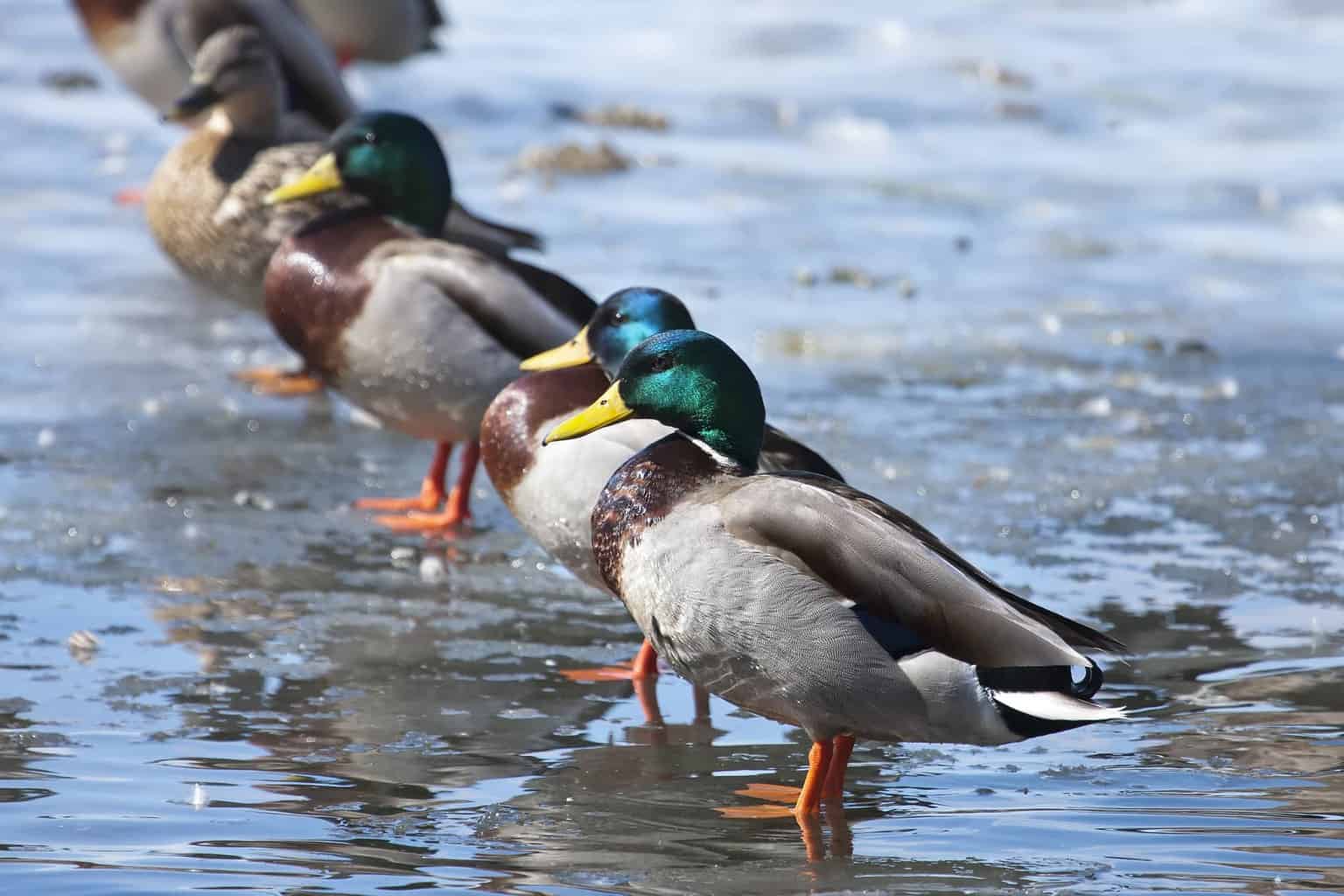
- Scientific Name: Anas platyrhynchos
- Length: 19.7–25.5 inches
- Weight: 35.4–46 ounces
- Wingspan: 32–37 inches
There are 21 duck species in the Ocean State, and the Mallards are the most common. The males have shiny green heads and a brownish beige coloration.
If you haven’t seen a Mallard duck in nature before, you likely saw it on TV. It’s commonly used in cartoons to illustrate ducks because of its unique coloration.
You can find Mallard ducks in watery areas, sieving through the sea of blue using their broad bills. They feed on insects and vegetation found in the water. Some of them also eat aquatic invertebrates when they can.
They feed on grains and seeds when on land, but you’ll probably only see them in the water.
Kentucky Warbler
- Scientific Name: Geothlypis Formosa
- Length: 5–5.2 inches
- Weight: 0.2–0.5 ounces
- Wingspan: 6.9–7.1 inches
Kentucky warblers have bright yellow underparts with olive-green upperparts. Their eyes are surrounded by black, and they have a tiny, almost unnoticeable crest. Their bodies are round and large, and they look strikingly similar to Hooded warblers.
You may differentiate them from Hooded warblers because they have black only on their eyes, while Hooded warblers have it surrounding their heads.
These birds are most common in Kentucky, and they’re rare visitors to Rhode Island, but you may get lucky.
Hooded Warbler
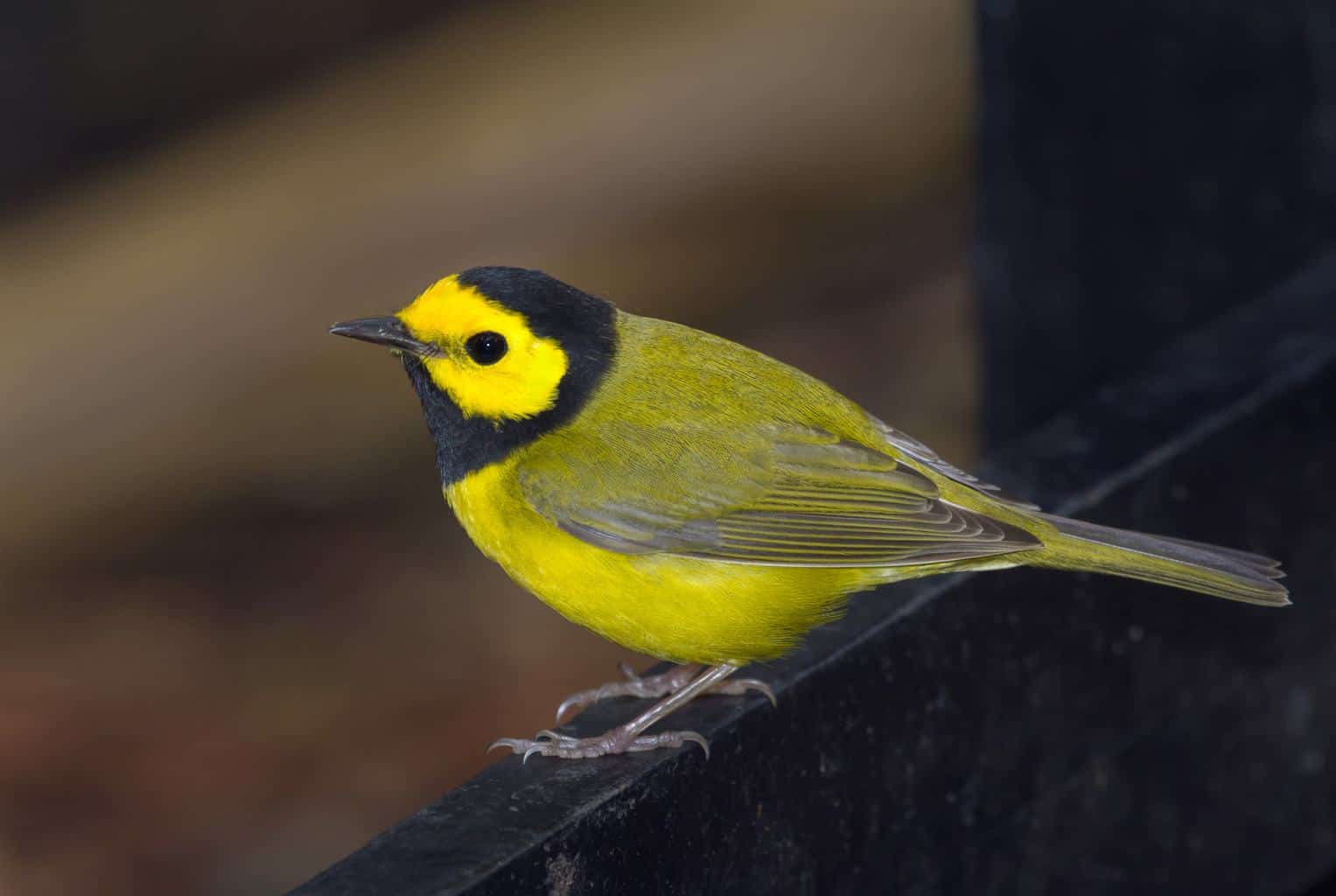
- Scientific Name: Setophaga citrina
- Length: 5–5.2 inches
- Weight: 0.2–0.5 ounces
- Wingspan: 6.9–7.1 inches
Hooded warblers look a bit odd because of their black head. They look like they are wearing real hoods, hence the name.
Like their cousins, Kentucky warblers, Hooded warblers are rare in Rhode Island. New World warblers are generally not common in the Northeastern states, so your chances of seeing them are slimmer than their bills.
Orange Birds in Rhode Island
American Robin

- Scientific Name: Turdus migratorius
- Length: 9.1–11.0 inches
- Weight: 2.5–3 ounces
- Wingspan: 12–16 inches
American robins are common breeders in Rhode Island and the surrounding New England region. They only move southward during the cold months.
They have fronts that look like burnt oranges, and their backs and wings are dark gray. They have a little white surrounding their eyes. Females have duller colors.
You’ll mostly find these birds foraging on the ground, looking for worms and insects. If you’re lucky, you may run into them in parks and city streets, too.
Baltimore Oriole
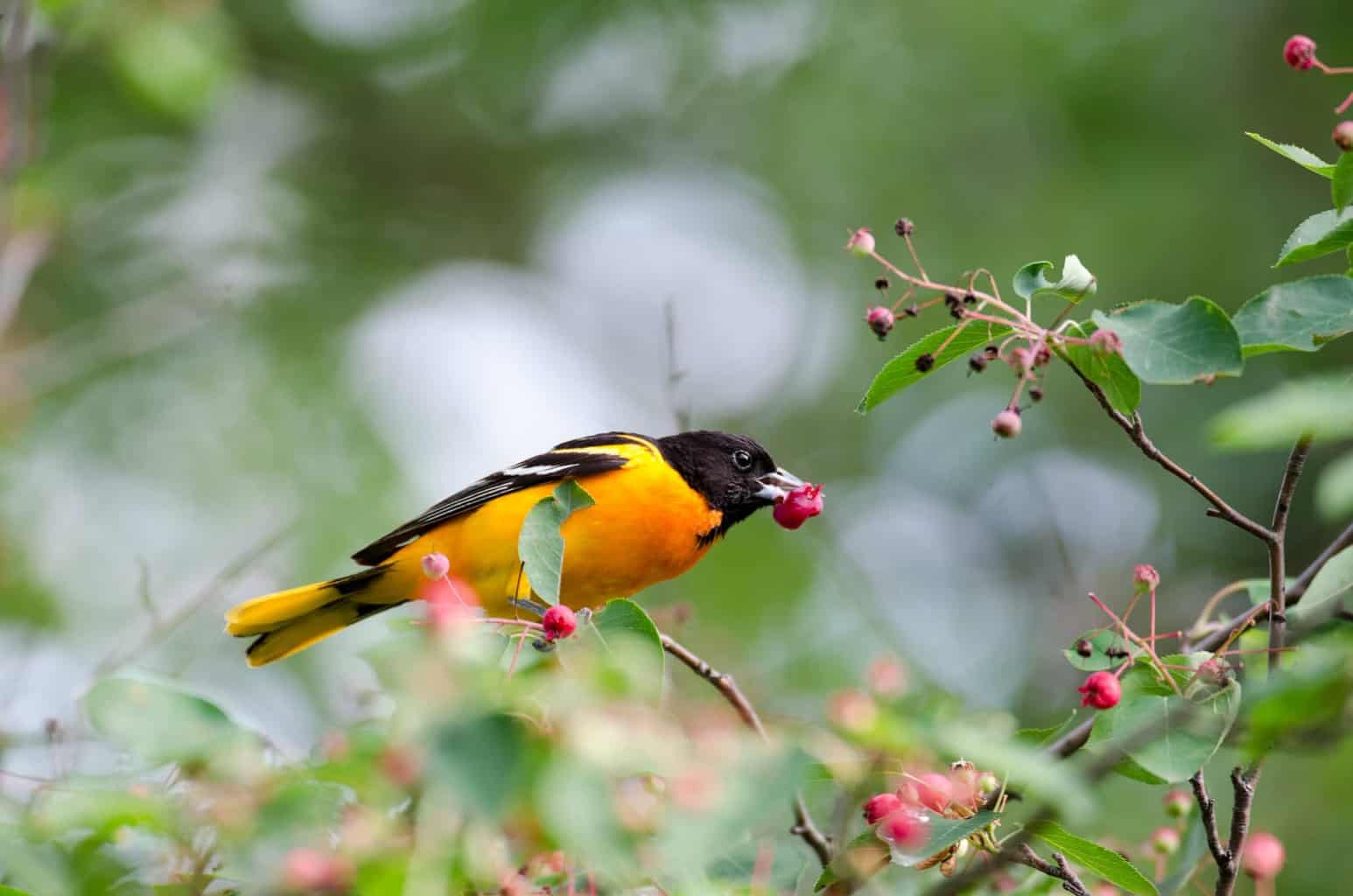
- Scientific Name: Icterus galbula
- Length: 6.6–7.5 inches
- Weight: 1–1.4 ounces
- Wingspan: 9–11.8 inches
Baltimore orioles won’t disappoint you if you’re trying to attract brightly colored birds to your backyard feeder. They visit them frequently, especially those that offer their favorite foods. They mainly feed on nectar, fruits, and insects.
They also like sugar water solutions; you can offer it in a holder if you have one.
Baltimore orioles are the most common orioles in Rhode Island. They spend most of their time around deciduous trees and open woodlands.
Eastern Towhee

- Scientific Name: Pipilo erythrophthalmus
- Length: 7–9.1 inches
- Weight: 1.1–2 ounces
- Wingspan: 8–11.8 inches
Eastern towhees have an interesting coloration. Their fronts are white, their backs, wings, and heads are black, and their sides are a burnt orange. They have a long black tail with white spots. They are the same size as sparrows, and they’re similar to them in terms of body shape.
Your best chance at finding these birds is to search around brushy areas and woodland hedges. They may also spend some time around residential gardens.
Eastern towhees spend the winter in New England, particularly in Rhode Island, Connecticut, and Massachusetts. You can attract them to your feeder by laying down some seeds, but bear in mind that they prefer platform feeders.
Yellow Birds in Rhode Island
American Goldfinch

- Scientific Name: Spinus tristis
- Length: 4.3–5.5 inches
- Weight: 0.39–0.71 ounces
- Wingspan: 7.5–8.7 inches
American goldfinches are hard to miss. Their bright lemon yellow body color will catch your eye a mile away. Their tail is black with white markings. They also have a tiny crest that makes them stand out among similar yellow birds.
These birds have black wings and head caps. Their flight is highly acrobatic, so you’ll be lucky if you catch them in flight. Their bodies bounce up and down constantly, and they move mostly in short bursts.
If you want to attract American goldfinches to your backyard, you can provide some seeds and insects for them.
Blue-Winged Warbler
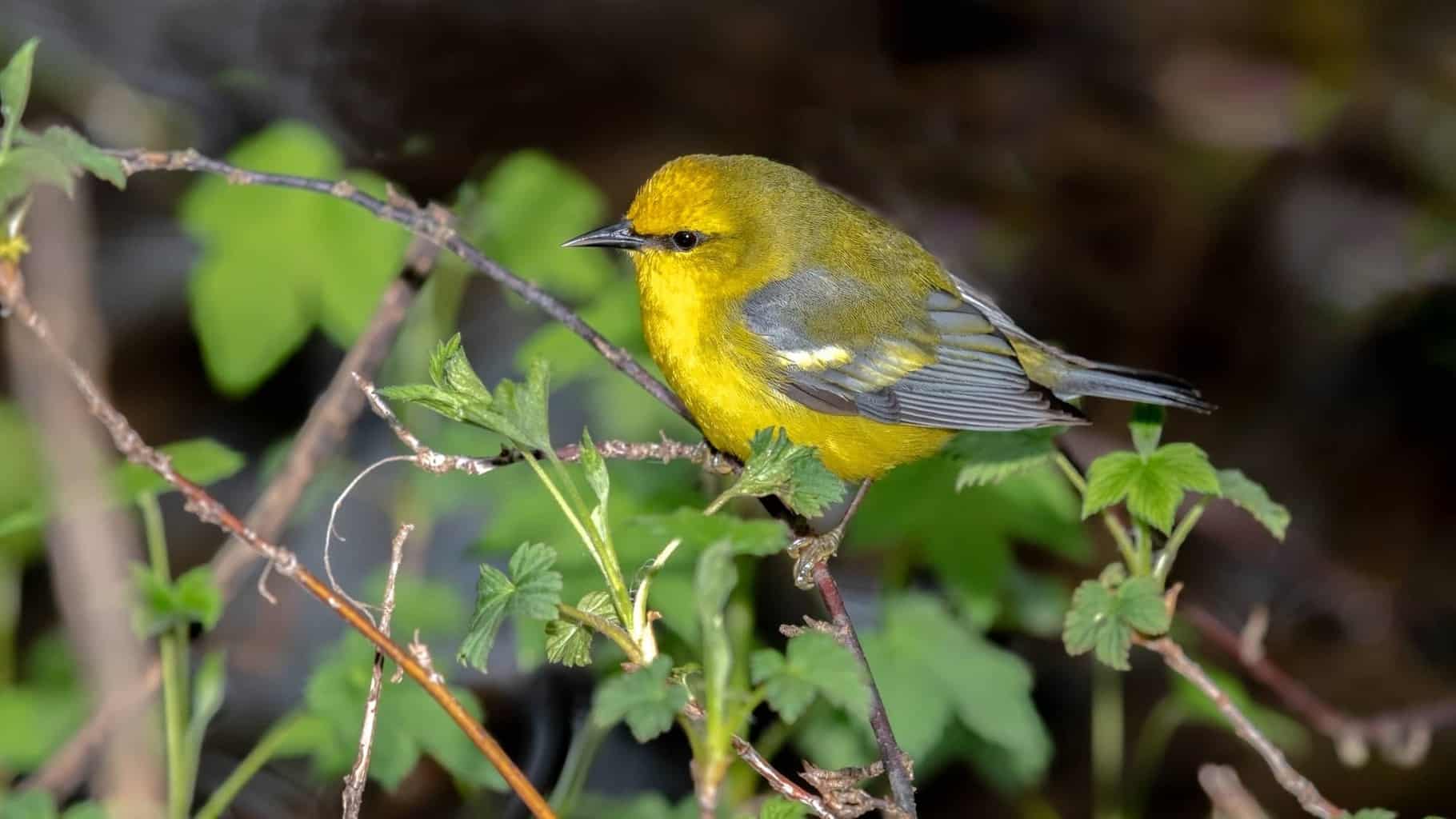
- Scientific Name: Vermivora cyanoptera
- Length: 4.3–4.7 inches
- Weight: 0.3–0.4 ounces
- Wingspan: 5.5–5.9 inches
The Blue-winged warbler lives up to its name—it’s a bright yellow bird with a pair of blue wings. That said, the blue is only prominent on the females. The males’ wings lean more towards gray.
These birds have black eyeliner, which makes them look like they have a constant angry expression. It may be less evident in the females, though.
You can see Blue-winged warblers commonly in Rhode Island and Connecticut.
Palm Warbler
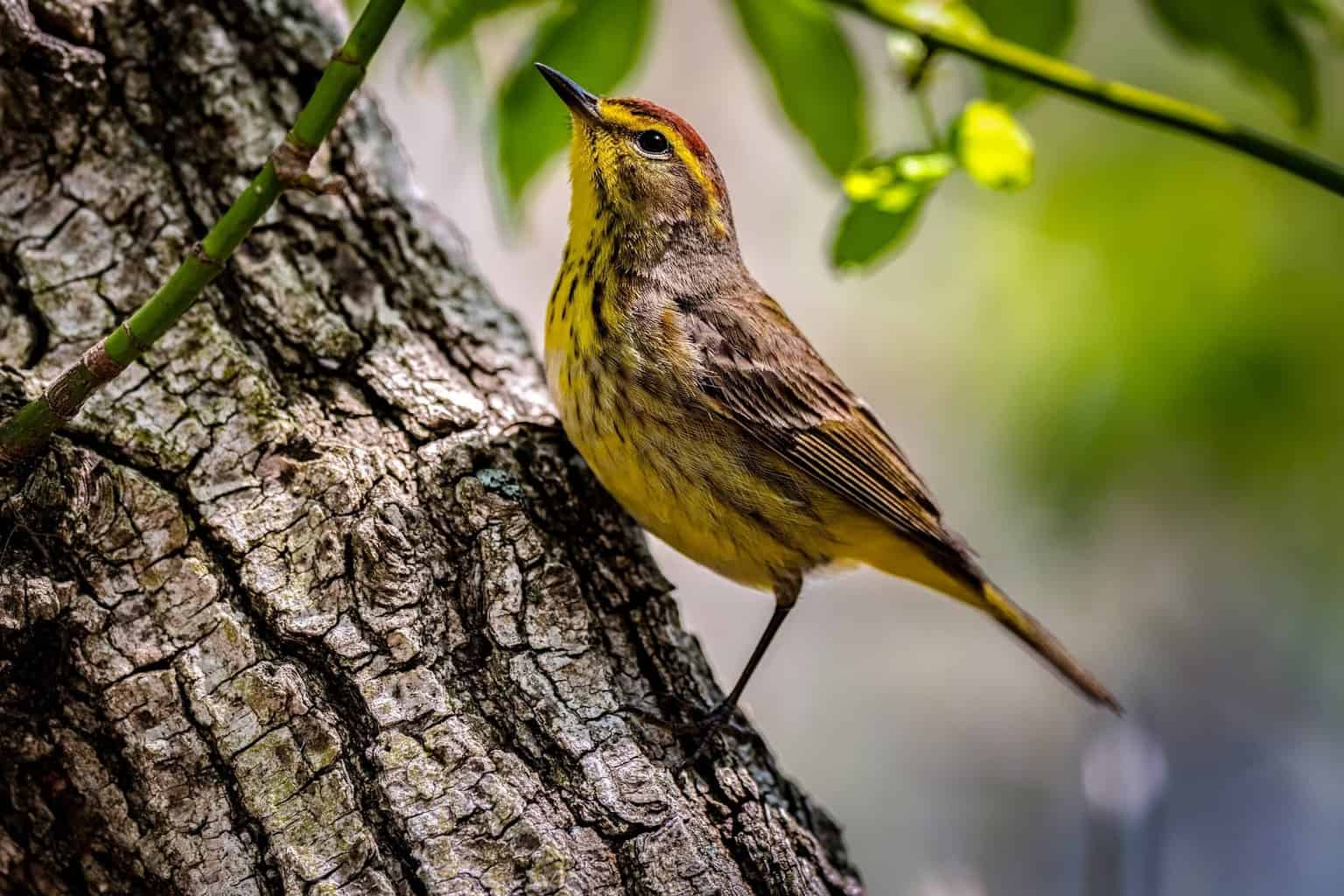
- Scientific Name: Setophaga palmarum
- Length: 4.7–5.4 inches
- Weight: 0.3–0.6 ounces
- Wingspan: 7.9–8.4 inches
The Palm warbler is a small yellow bird that’s yet another member of the New World warblers. It has a rusty orange head cap, along with a yellow body and pale beige wings.
Palm warblers look like almost all yellow birds of the same size, but you can identify them by the orange head cap.
You may recognize a Palm warbler at first glance because of its tail wagging. These birds are constantly moving their tails up and down, and they forage on the ground frequently in search of food.
Townsend’s Warbler
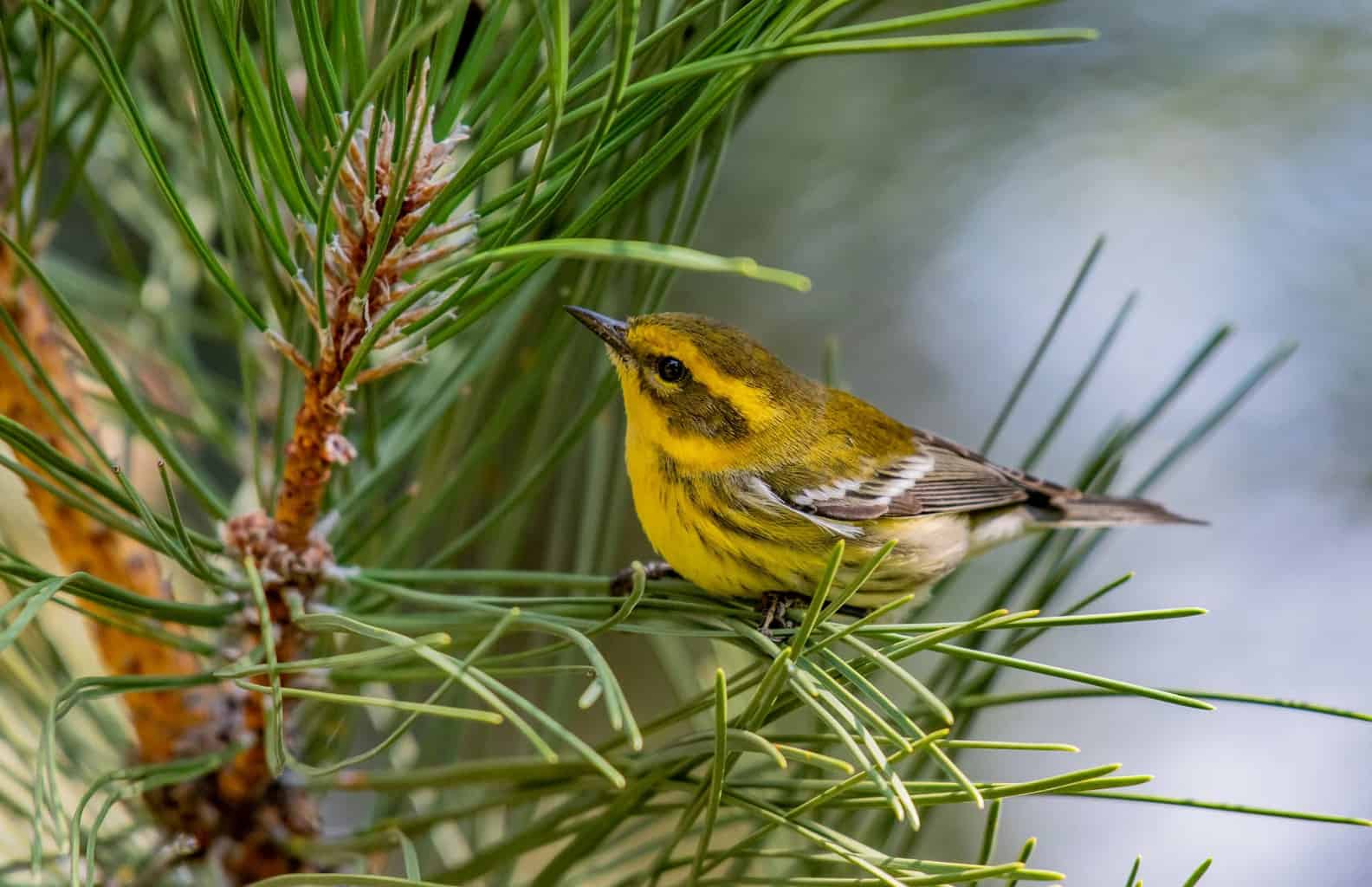
- Scientific Name: Setophaga townsendi
- Length: 4.5–5 inches
- Weight: 0.3–0.4 ounces
- Wingspan: 7.8–8.1 inches
Townsend’s warblers look like they’ve been subject to random brush streaks of black. Their heads and upper breast are yellow, and they have odd-shaped black streaks all over. Meanwhile, their wings are black and white.
In the winter, these birds find shelter in backyard feeders. You can provide some food to keep them warm, such as peanut butter and suet.
Other Birds To Watch For in Rhode Island
Downy Woodpecker

- Scientific Name: Dryobates pubescens
- Length: 5.5–7 inches
- Weight: 0.7–1 ounce
- Wingspan: 10–11.8 inches
There are many woodpecker species in Rhode Island, and Downy woodpeckers are among them. They’re the smallest species of their kind in North America, and they look strikingly similar to their cousins, the hairy woodpecker.
These birds are primarily black and white, but the males have tiny red patches on their crests. You’ll have to really strain your eyes to see the red color, though.
Downy woodpeckers rarely move territories. They like to stay in the same place as long as there’s no danger, and they feed on dried fruits and seeds.
House Sparrow

- Scientific Name: Passer domesticus
- Length: 6–6.7 inches
- Weight: 0.9–1.1 ounces
- Wingspan: 7.6–9.8 inches
House sparrows have brown wings with hints of black here and there. Additionally, their bellies are gray, and their eyes are surrounded by black. It’s worth noting that the females have paler coloration, though.
You can find these birds on city streets and around the countryside. Their numbers are on the rise in Rhode Island and they compete with native birds or resources, to the point that they’re considered an invasive species.
American Crow

- Scientific Name: Corvus brachyrhynchos
- Length: 16–21 inches
- Weight: 11–21 ounces
- Wingspan: 33–39 inches
The American crow is common across all the states. You can probably see it in any state you visit, and Rhode Island isn’t an exception.
You can quickly identify an American crow because of its black body that looks like coal from head to tail. Their call is also unique, sounding like a caw caw.
You can see these birds in prairies, open woods, and roadsides.
European Starling
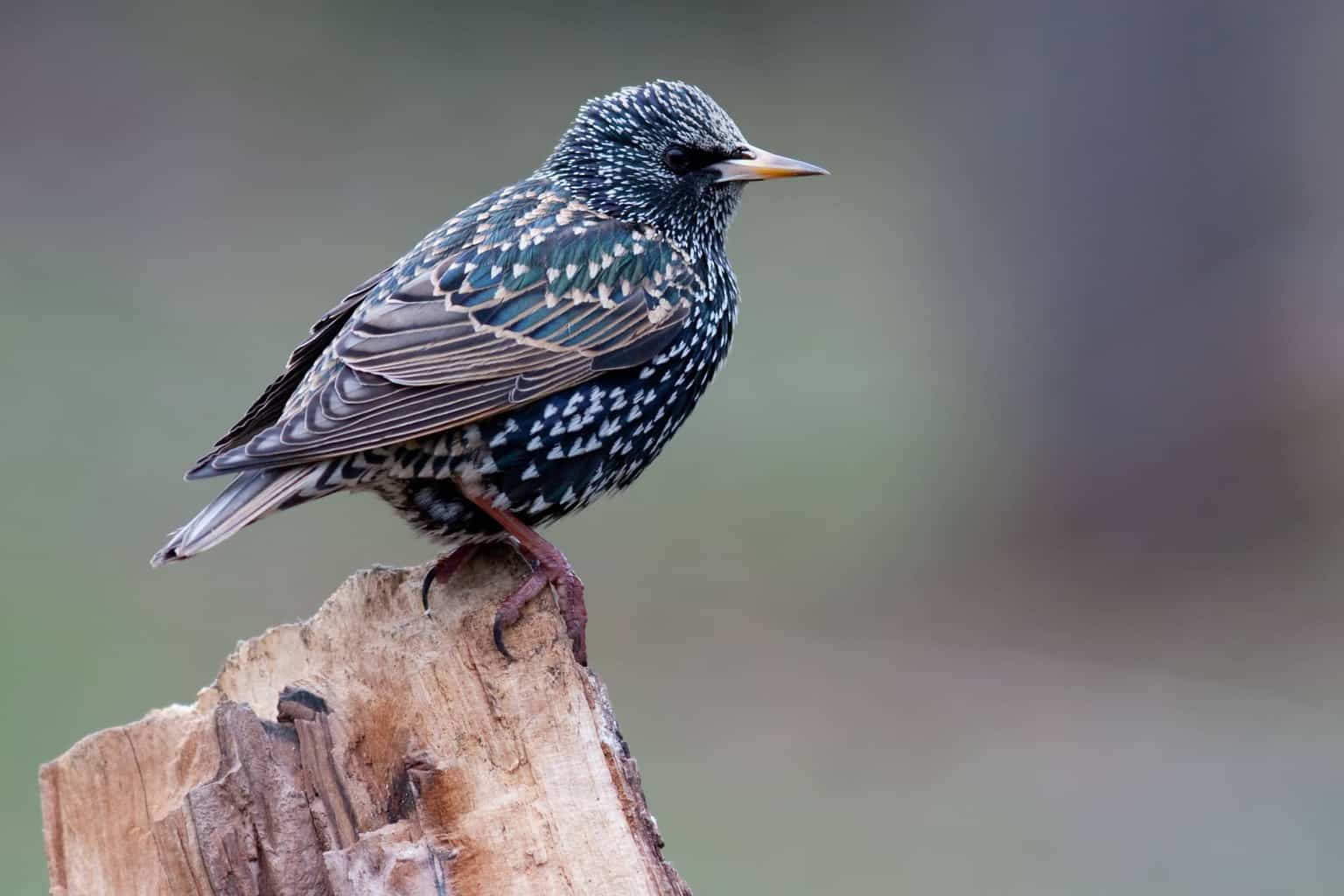
- Scientific Name: Sturnus vulgaris
- Length: 8–9 inches
- Weight: 2–3.5 ounces
- Wingspan: 12–16 inches
European starlings are extremely beautiful; you’ll be lucky to catch them, especially under direct sunlight. They have iridescent feathers of many different colors. They may seem purple, blue, or even green, depending on the light that falls upon them.
These birds are common in Rhode Island, like all other blackbirds on this list. They spend most of their time around parks, city streets, and fields.
Rusty Blackbird
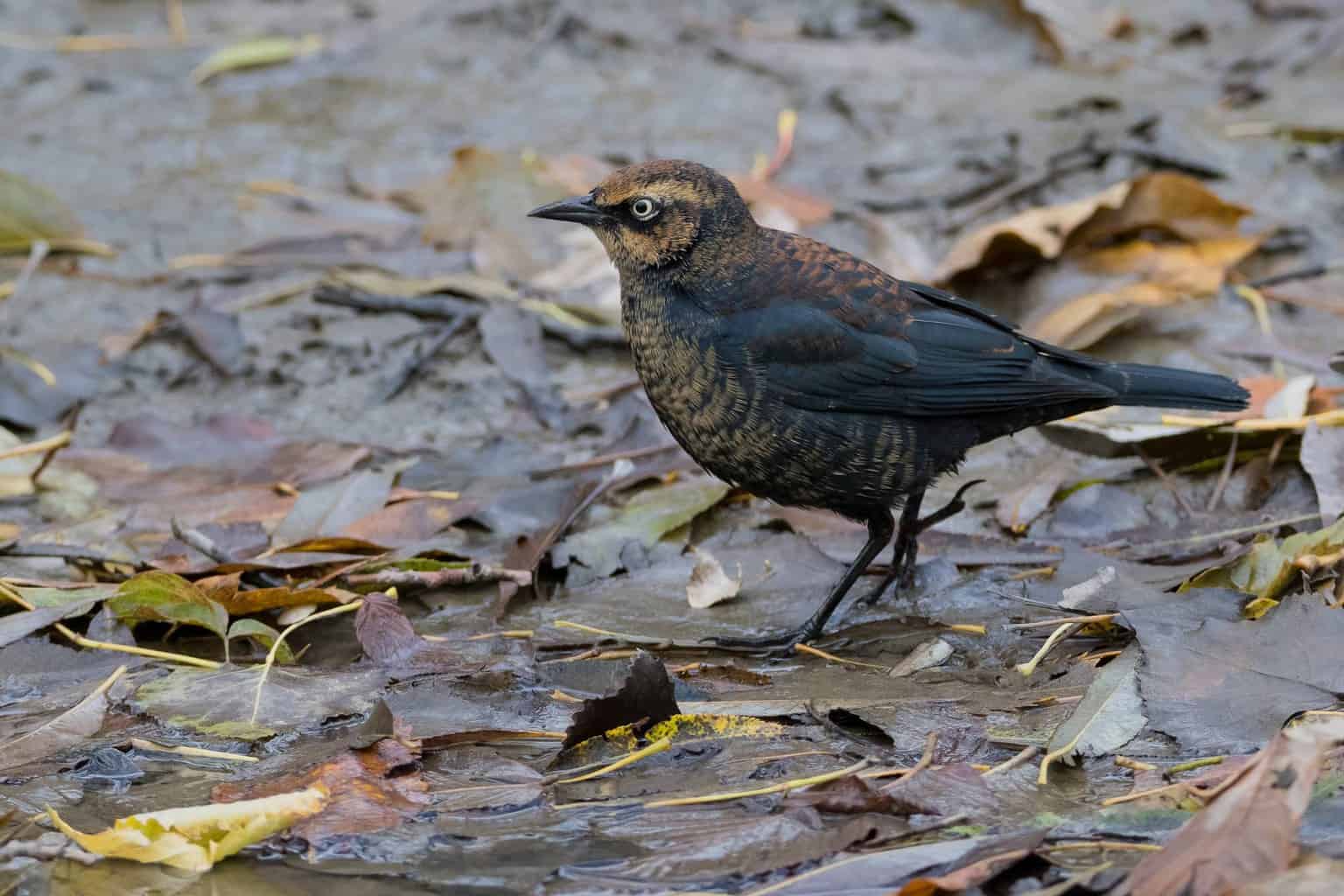
- Scientific Name: Euphagus carolinus
- Length: 8.3–9 inches
- Weight: 1.7–2.9 ounces
- Wingspan: 14–14.6 inches
Rusty blackbirds are easily identifiable in the summer. At that time, they have brown plumage with streaks of black and deep green color. We can’t say the same about the winter, though. In the colder months, their bodies turn a deep black color, and they look similar to American crows.
If you want to identify them, you can look for their long tails and medium-length wings. Their eyes are also white and long.
You can see rusty blackbirds around wet areas. Look for them near marshes, ponds, and streams around tree trunks and shrubs. They also stay near areas that are prone to flooding.
To Wrap Up
As you can see, there are many types of birds that live and breed in Rhode Island. No matter the color they’re looking for, Rhode Island birding fans can find it on this list. Remember to move silently to avoid scaring birds, and it’d be helpful if you wear colors that camouflage against nature.
Hopefully, you’ll be able to see at least 5–6 species on this list!

